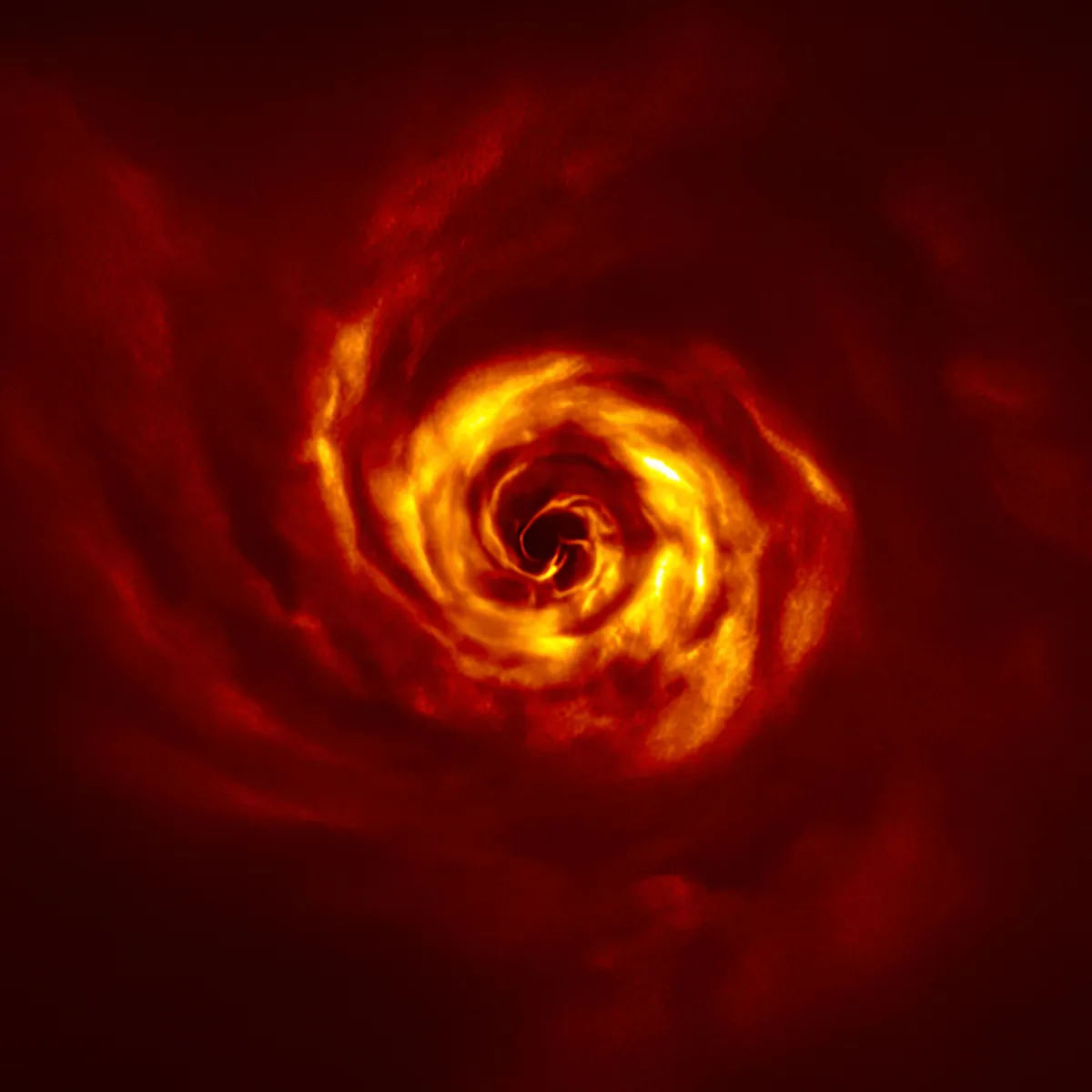
This image shows the disc of cosmic dust and gas that surrounds young star AB Aurigae. Within this protoplanetary disc, astronomers believe they may have spotted a feature that indicates a planet forming in orbit around the star.
After a star has formed, leftover dust and gas orbits the star as a so-called protoplanetary disc. Over time this material begins to coalesce via gravity into larger grains of material, which then grow to become larger pebbles and, eventually, a fully-formed planet in orbit around the star.
In this image, the bright yellow twist formation close to the centre could be disturbances in the circumstellar gas generated by the baby planet in orbit.
AB Aurgiae is about 520 lightyears way in the constellation of Auriga, which makes it relatively close-by in cosmic terms.
By studying phenomena such as this, astronomers can hope to get a better grasp on how planets form around young stars and, hopefully, more clues as to how our own Solar System formed.
Read our article in which The Sky at Night's Chris Lintott discusses how stars form.
Image stats
Observatory Very Large Telescope
Release date 20 May 2020
Image creditESO/Boccaletti et al.
